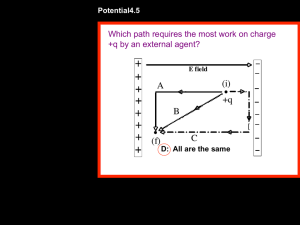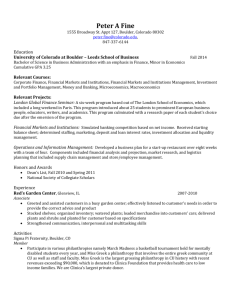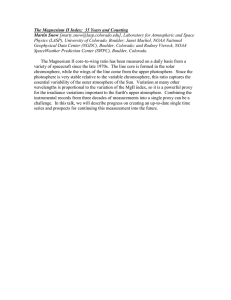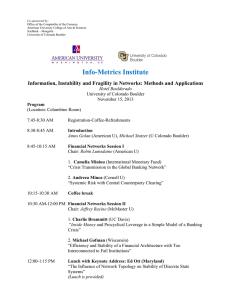6.004 - 2016 IGAC Science Conference
advertisement
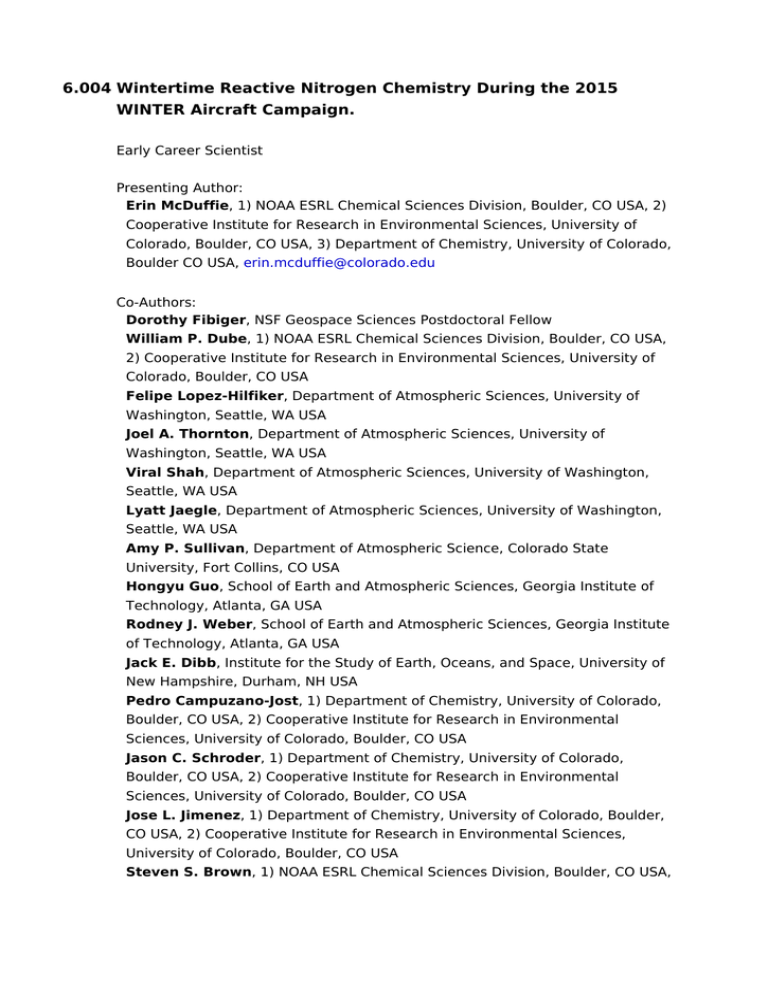
6.004 Wintertime Reactive Nitrogen Chemistry During the 2015 WINTER Aircraft Campaign. Early Career Scientist Presenting Author: Erin McDuffie, 1) NOAA ESRL Chemical Sciences Division, Boulder, CO USA, 2) Cooperative Institute for Research in Environmental Sciences, University of Colorado, Boulder, CO USA, 3) Department of Chemistry, University of Colorado, Boulder CO USA, erin.mcduffie@colorado.edu Co-Authors: Dorothy Fibiger, NSF Geospace Sciences Postdoctoral Fellow William P. Dube, 1) NOAA ESRL Chemical Sciences Division, Boulder, CO USA, 2) Cooperative Institute for Research in Environmental Sciences, University of Colorado, Boulder, CO USA Felipe Lopez-Hilfiker, Department of Atmospheric Sciences, University of Washington, Seattle, WA USA Joel A. Thornton, Department of Atmospheric Sciences, University of Washington, Seattle, WA USA Viral Shah, Department of Atmospheric Sciences, University of Washington, Seattle, WA USA Lyatt Jaegle, Department of Atmospheric Sciences, University of Washington, Seattle, WA USA Amy P. Sullivan, Department of Atmospheric Science, Colorado State University, Fort Collins, CO USA Hongyu Guo, School of Earth and Atmospheric Sciences, Georgia Institute of Technology, Atlanta, GA USA Rodney J. Weber, School of Earth and Atmospheric Sciences, Georgia Institute of Technology, Atlanta, GA USA Jack E. Dibb, Institute for the Study of Earth, Oceans, and Space, University of New Hampshire, Durham, NH USA Pedro Campuzano-Jost, 1) Department of Chemistry, University of Colorado, Boulder, CO USA, 2) Cooperative Institute for Research in Environmental Sciences, University of Colorado, Boulder, CO USA Jason C. Schroder, 1) Department of Chemistry, University of Colorado, Boulder, CO USA, 2) Cooperative Institute for Research in Environmental Sciences, University of Colorado, Boulder, CO USA Jose L. Jimenez, 1) Department of Chemistry, University of Colorado, Boulder, CO USA, 2) Cooperative Institute for Research in Environmental Sciences, University of Colorado, Boulder, CO USA Steven S. Brown, 1) NOAA ESRL Chemical Sciences Division, Boulder, CO USA, 2) Department of Chemistry, University of Colorado, Boulder, CO USA Abstract: Tropospheric ozone (O3) is a potent greenhouse gas that degrades regional air quality. Anthropogenic NOx emissions and chemistry are an important regional O3 source during midlatitude summer, but may destroy O3 during winter. The large majority of previous field studies have focused on understanding reactive NOx-O3 relationships under summertime conditions. However, there remain outstanding scientific questions regarding the influence of NOx on wintertime O3, in part because of the relevant atmospheric chemistry that occurs largely at night, including N2O5 multiphase processes. The winter tropospheric O3 budget depends critically on N2O5 production and the efficiency of its subsequent reaction on aerosols to nitric acid (HNO3) or nitryl chloride (ClNO2). These processes are highly uncertain due in part to the limited database for wintertime atmospheric chemical measurements. The Wintertime Investigation of Transport, Emissions, and Reactivity (WINTER) campaign conducted 13 research flights over the eastern US in February and March 2015. A wide variety of environments were sampled during day and overnight flights over continental and marine environments. Reactive nitrogen measurements were collected with a cavity ring down spectrometer, while HNO3 and ClNO2 were measured with chemical ionization mass spectrometry. Initial analysis of these data has shown that wintertime N2O5 mechanisms and reactive nitrogen partitioning are highly variable. Presented here is further analysis aimed at quantifying the observed N2O5 aerosol reactive uptake coefficient as a function of different ambient conditions observed during WINTER (e.g. temperature, relative humidity, gas vs. particle phase nitrate and chloride). In addition, a chemical box model is used to assess the chemical and/or environmental factors that influence reactive nitrogen partitioning.
